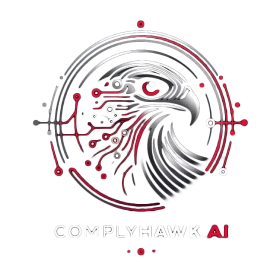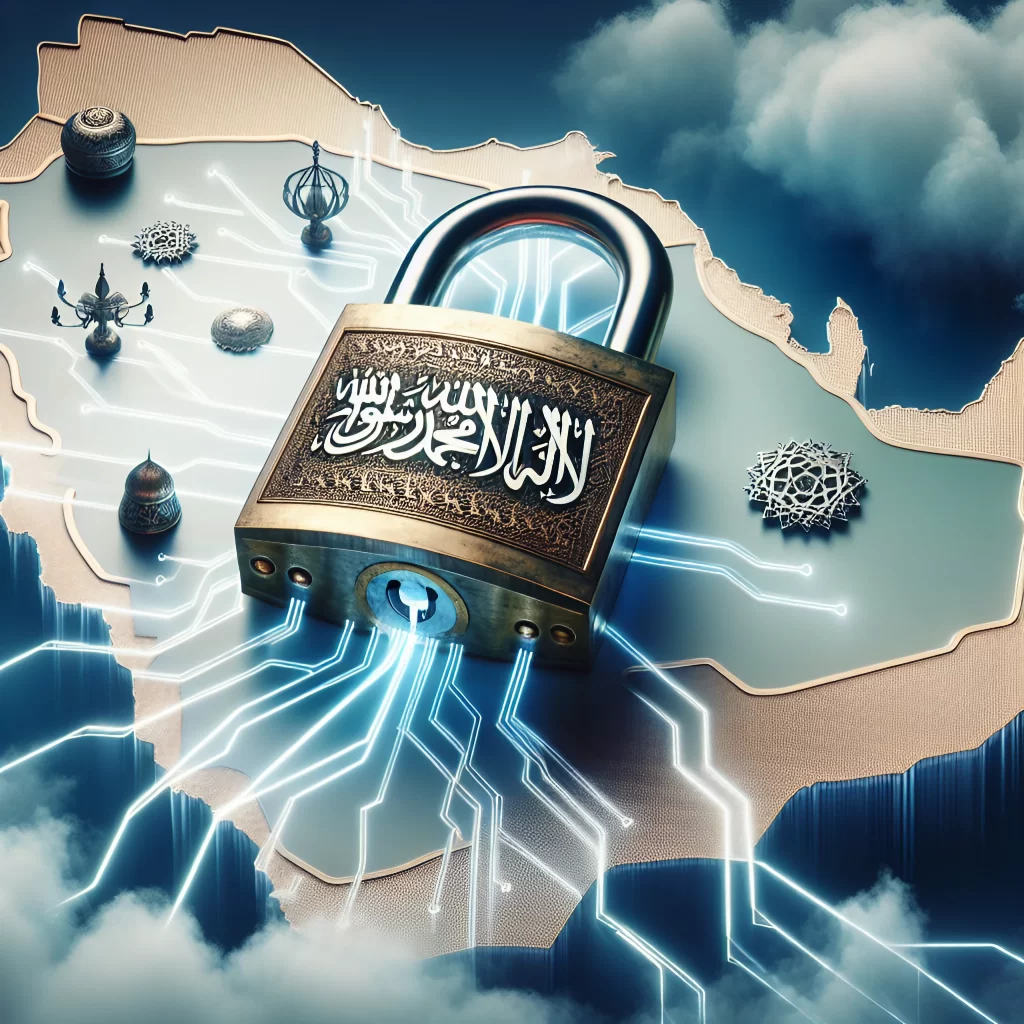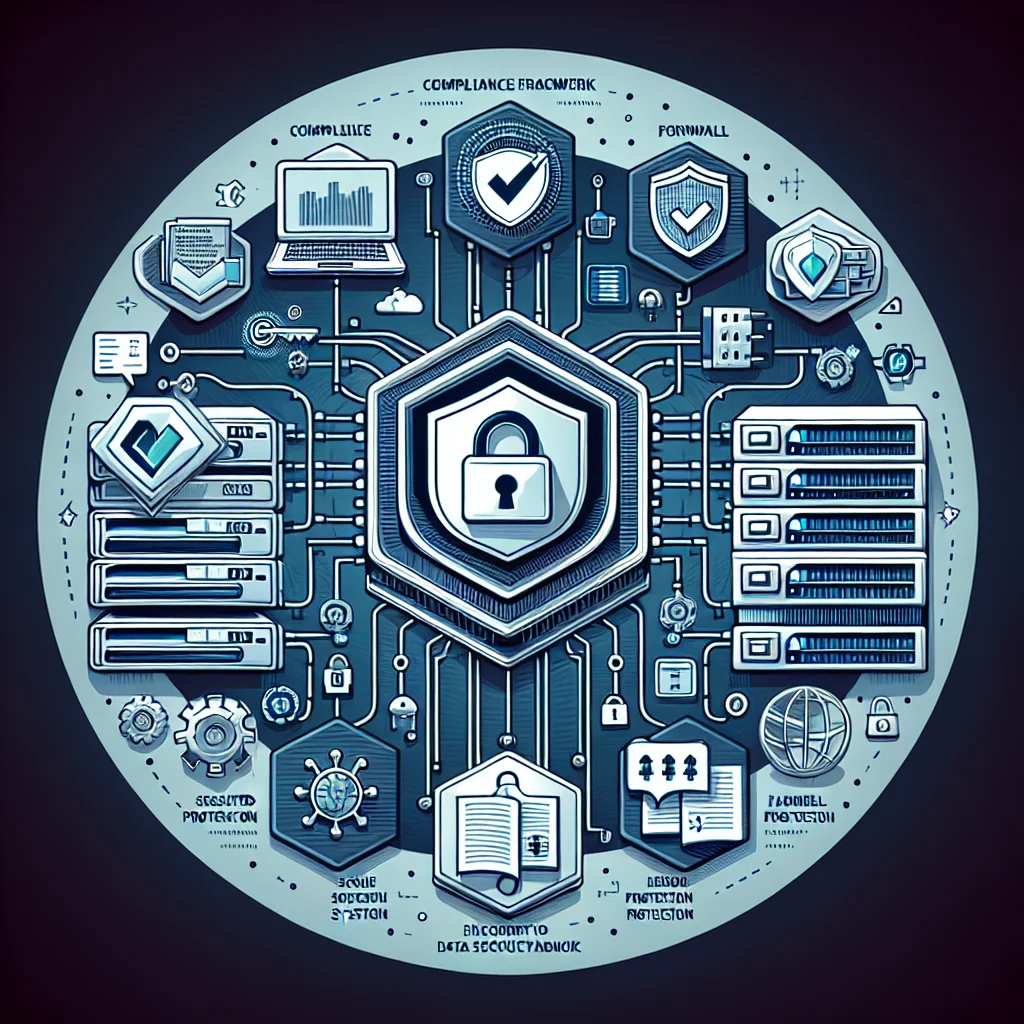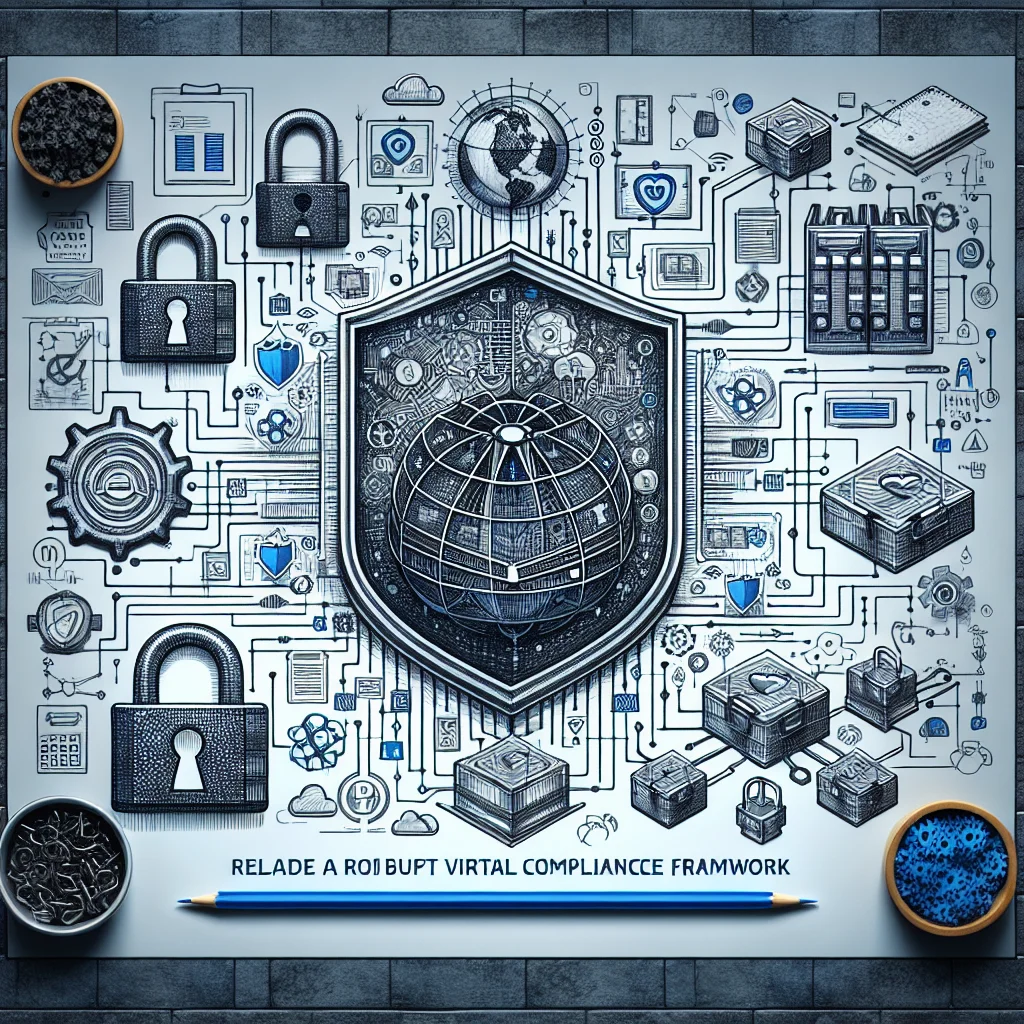In an era where data breaches and cyber threats are becoming increasingly prevalent, compliance frameworks have taken center stage as essential tools for safeguarding organizational data. In the Middle East, the National Cybersecurity Authority (NCA) Critical Cybersecurity Controls (CCF) framework stands out as a robust guideline for achieving a high standard of cybersecurity.
This article aims to provide a comprehensive guide to the NCA CCF framework, addressing the most commonly asked questions by Chief Information Security Officers (CISOs) and IT professionals in the region. We’ll also highlight common controls between NCA CCF and other widely adopted frameworks like ISO27001 and PCI DSS.
What is the NCA CCF?
The NCA Critical Cybersecurity Controls (CCF) is a set of guidelines developed by Saudi Arabia’s National Cybersecurity Authority to enhance the country’s cybersecurity posture. It is designed to help organizations protect their critical assets and ensure data integrity, confidentiality, and availability.
Who is it for?
The NCA CCF is primarily aimed at government entities, critical national infrastructure (CNI) organizations, and private sector companies in Saudi Arabia that handle sensitive data. However, it’s increasingly being adopted by organizations across the Middle East to ensure compliance and bolster cybersecurity defenses.
Commonly Asked Questions by CISOs
1. What are the key components of the NCA CCF?
The NCA CCF encompasses 114 controls grouped into five main categories:
- Governance and Compliance
- Risk Management
- Cybersecurity Operations
- Third-party Relationships
- Information Sharing and Coordination
2. How does the NCA CCF differ from other frameworks like ISO27001 and PCI DSS?
While ISO27001 and PCI DSS are internationally recognized frameworks, the NCA CCF is specifically tailored for the Middle Eastern context, focusing on regional threats and compliance requirements.
3. What steps should I take to implement the NCA CCF in my organization?
Start by conducting a gap analysis to identify areas where your current cybersecurity measures fall short of the NCA CCF requirements. Develop a roadmap for implementation, prioritize high-risk areas, and allocate resources accordingly.
4. How do I ensure continuous compliance with the NCA CCF?
Continuous compliance involves regular audits, real-time monitoring, and updating your cybersecurity practices to align with evolving threats and regulatory changes. Automated compliance platforms can simplify this process.
5. Are there specific Middle East considerations for the NCA CCF?
Yes, cultural and regulatory nuances in the Middle East necessitate a tailored approach. For instance, data localization laws may require that sensitive data be stored within the country.
6. What are the penalties for non-compliance with the NCA CCF?
Non-compliance can result in hefty fines, legal action, and reputational damage. Ensuring compliance not only mitigates these risks but also enhances trust among stakeholders.
7. How does the NCA CCF address third-party risks?
The framework includes extensive guidelines for managing third-party risks, including conducting due diligence, establishing contractual obligations, and continuous monitoring of third-party activities.
8. Can I integrate the NCA CCF with existing compliance frameworks?
Yes, many organizations integrate the NCA CCF with frameworks like ISO27001 and PCI DSS to create a comprehensive cybersecurity strategy. This approach ensures that all regulatory and security requirements are met.
9. How does the NCA CCF approach incident response?
The framework emphasizes the importance of having a robust incident response plan, including regular training, simulation exercises, and clear communication channels to manage and mitigate incidents effectively.
10. What role does employee training play in NCA CCF compliance?
Employee training is crucial for ensuring that staff understand their roles and responsibilities in maintaining cybersecurity. Regular training sessions should be conducted to keep employees updated on the latest security practices and threats.
11. How do I measure the effectiveness of NCA CCF controls?
Effectiveness can be measured through regular audits, performance metrics, and feedback from internal and external stakeholders. Automated compliance platforms can also provide real-time insights into control effectiveness.
12. What are the documentation requirements for NCA CCF compliance?
Proper documentation is essential for demonstrating compliance. This includes policies, procedures, audit trails, and records of training sessions. Ensure that all documentation is up-to-date and easily accessible.
13. How does the NCA CCF handle data privacy?
The framework includes stringent data privacy controls, ensuring that personal and sensitive information is adequately protected. This aligns with global data protection standards like GDPR.
14. What are the best practices for achieving NCA CCF compliance?
Best practices include conducting regular risk assessments, maintaining continuous monitoring, fostering a culture of cybersecurity awareness, and leveraging automated compliance tools for efficiency.
15. How do I stay updated on changes to the NCA CCF?
Stay connected with the National Cybersecurity Authority through their official channels, attend relevant industry events, and subscribe to cybersecurity newsletters to stay informed about updates and changes to the framework.
More Frequently Asked Questions
16. What resources are available for training on the NCA CCF?
Organizations can access various training resources, including workshops, online courses, and certification programs offered by the National Cybersecurity Authority and other accredited institutions. These resources are designed to enhance understanding and application of the NCA CCF.
17. How can small businesses benefit from the NCA CCF?
While the NCA CCF is geared towards larger entities, small businesses can adopt its principles to strengthen their cybersecurity posture. By implementing relevant controls, they can better protect sensitive data and comply with regulatory requirements.
18. Is there a roadmap for NCA CCF compliance?
Yes, the National Cybersecurity Authority provides guidance and resources to help organizations develop a roadmap for NCA CCF compliance. This typically includes key steps, timelines, and best practices tailored to unique business needs.
19. How does the NCA CCF address emerging cybersecurity threats?
The framework is designed to be adaptable, with periodic updates to incorporate new cybersecurity threats and trends. Organizations are encouraged to stay informed and adjust their practices in line with these updates.
20. Are there specific tools recommended for facilitating NCA CCF compliance?
There are various cybersecurity tools available that can aid in the implementation and monitoring of NCA CCF controls. These may include vulnerability assessment tools, security information and event management (SIEM) solutions, and compliance management platforms.
21. What is the role of leadership in achieving NCA CCF compliance?
Leadership plays a pivotal role in creating a culture of cybersecurity within the organization. By prioritizing compliance initiatives and allocating necessary resources, leaders can demonstrate their commitment to cybersecurity, ensuring that it is ingrained in the organizational strategy and operations.
22. How often should organizations conduct risk assessments?
Organizations should conduct risk assessments at least annually, or whenever there are significant changes in operations, technology, or regulatory requirements. This frequent evaluation helps identify new vulnerabilities and ensures that security measures remain effective against emerging threats.
23. How can organizations document compliance efforts effectively?
Effective documentation involves maintaining a detailed log of all compliance-related activities, including risk assessments, training sessions, policy updates, and incident responses. Utilizing centralized compliance management tools can streamline this process and ensure that all records are organized and easily accessible.
24. What are the repercussions of a data breach despite NCA CCF compliance?
Even with NCA CCF compliance, a data breach can still occur. The repercussions can include legal liabilities, regulatory penalties, loss of customer trust, and significant costs associated with remediation. Therefore, it’s crucial to have a robust incident response plan in place.
25. Can external consultants assist with NCA CCF compliance?
Yes, external consultants can provide valuable expertise and insights into achieving NCA CCF compliance. They can assist in conducting risk assessments, developing policies, and implementing best practices tailored to an organization’s specific needs and industry standards.
26. What should I do if my organization fails a compliance audit?
If an organization fails a compliance audit, it is essential to conduct a thorough review to identify the root causes of non-compliance. Develop a corrective action plan that addresses the identified issues, and prioritize implementing the necessary changes. Regular follow-ups should be scheduled to ensure that all corrective measures are effectively applied.
27. How can I promote a culture of cybersecurity within my organization?
Promoting a culture of cybersecurity involves engaging employees at all levels through regular training, awareness campaigns, and clear communication regarding the importance of security practices. Encourage open dialogue about cybersecurity concerns, and reward proactive behaviors that contribute to a safer work environment.
28. Are there specific compliance deadlines I should be aware of?
Compliance deadlines can vary based on industry regulations and the specific requirements of the NCA CCF. Organizations should stay informed through official communications from the National Cybersecurity Authority and align their compliance efforts with any stipulated timelines.
29. What impact does the NCA CCF have on third-party vendors?
The NCA CCF extends its compliance requirements to third-party vendors, emphasizing the importance of managing risks associated with external partners. Organizations should establish clear compliance expectations for vendors and ensure that they align with NCA CCF standards through regular assessments and monitoring.
30. How does NCA CCF support incident response planning?
The NCA CCF encourages organizations to develop comprehensive incident response plans that outline procedures for responding to cybersecurity incidents. This includes defining roles and responsibilities, communication protocols, and recovery strategies to minimize the impact of security breaches on business operations.
Common Controls Between Frameworks
Understanding the common controls between different frameworks can simplify the compliance process. Here are some examples:
ISO27001 and NCA CCF
- A.6.1.1 – Information security roles and responsibilities
- Both frameworks emphasize clearly defined roles and responsibilities for managing information security.
- A.12.6.1 – Control of technical vulnerabilities
- Requires organizations to establish processes for identifying and mitigating technical vulnerabilities in systems and applications.
PCI DSS and NCA CCF
- Requirement 1.1.6 – Documentation of security policies and procedures
- Both frameworks mandate the documentation of security policies and procedures to ensure compliance and facilitate audits.
- Requirement 10.2.2 – Implement automated audit trails
- Calls for the implementation of automated audit trails to track user activities and detect security incidents promptly.
NIST Cybersecurity Framework and NCA CCF
- ID.AM-5 – Resources are prioritized and managed
- Both frameworks highlight the necessity of prioritizing and managing resources based on risk assessment outcomes to ensure effective cybersecurity practices.
- IR-4 – Incident monitoring
- Emphasizes the importance of continuous monitoring and review of incidents to identify potential threats quickly and enhance response strategies.
CIS Controls and NCA CCF
- CIS Control 1 – Inventory of Authorized and Unauthorized Devices
- Stresses the need for organizations to maintain an up-to-date inventory of devices on their networks to understand and manage risks effectively.
- CIS Control 16 – Account Monitoring and Control
- Focuses on monitoring and controlling user accounts to prevent unauthorized access, ensuring compliance with access management standards set forth in both frameworks.
Conclusion
The NCA CCF framework is a vital tool for organizations in the Middle East looking to enhance their cybersecurity posture. By addressing the unique challenges and regulatory landscape of the region, it provides a comprehensive approach to safeguarding critical assets.
If you’re a CISO or IT professional looking to streamline your compliance efforts and enhance your organization’s cybersecurity posture, consider partnering with an automated compliance platform such as ComplyHawk. Specializing in this framework and region, ComplyHawk can help you achieve and maintain compliance with ease. Learn more about ComplyHawk



